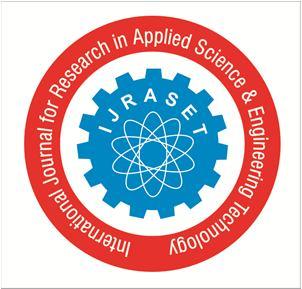
2 minute read
Fusion of CT and MRI Medical Images Using Dual Tree Complex Wavelet Transform
Gajjala Jahnavi1, Alla Deepthi Chowdary2, Ananthula Jagadeesh3 , Associate Prof. Kachapuram Basava Raju4
Department of Artificial Intelligence, Anurag Group of Institutions, Hyderabad, Telangana, India
Advertisement

Abstract: Combining various medical pictures will improve illness diagnosis accuracy and illustrate the complex link between them for medical study. Existing approaches take a long time and require a large number of data to train the models. In this model, we will use multi-stage fusion networks to extract sophisticated information from medical pictures such as Magnetic Resonance Imaging (MRI) and Computed Tomography (CT). In the suggested approach, we will extract the difficult and correlated information from each picture using the Dual Tree Complex Wavelet Transform (DTCWT), and then segment the fused image to obtain the segmented image.
The proposed approach entails, the fusion of multimodal medical pictures may be accomplished using the Dual Tree Complex Wavelet Transform, which converts the original medical image to grayscale and decomposes it before extracting the wavelet coefficients using DTCWT. Following that, wavelet approximation is utilized to produce the fused coefficients. To obtain a final fused picture, the Inverse Dual Tree Complicated Wavelet Transform is performed. Additionally, segmentation is carried out in order to provide a segmented image for better visual representation. The quality of the final fused picture can be increased using the proposed strategy.
Keywords: Image Fusion, Computed Tomography (CT), Magnetic Resonance Imaging (MRI), Dual Tree Complex Wavelet Transform (DTCWT), Positron Emission Tomography (PET), Inverse Dual Tree Complex Wavelet Transform (DTCWT).
I. INTRODUCTION
Medical images like X-rays, Positron Emission Tomography (PET), Single Photon Emission Computed Tomography (SPECT), Magnetic Resonance Imaging (MRI), and Computed Tomography (CT) will not provide as much detail for medical research and diagnosis as detailed information. They might provide a significant amount of detailed clinical data. Medical imaging systems will provide different medical information regarding tissues that are complicated in most cases. For example, X-rays are used for identify bone injuries and bone fractures, CT images will give the elaborated information of internal organs, tumors and blood vessels.
MRI is used to provide information about tissues. Whereas the SPECT will show how blood flows to tissues and organs, and PET helps to reveal how the tissues and organs are functioning. As the expansion of clinical usage of diverse medical imaging systems, the merging of multi- modality pictures plays a significant role in the medical imaging sector. Various medical imaging modalities can produce scans with both complementary and redundant information. The integration of medical pictures can provide clinical information that was not visible in the individual scans.
The project’s main goal is to create an efficient fusion approach that uses the Dual Tree Complex Wavelet Transform to fuse single or multi-modal pictures. In a single image, all important information from several source photographs might be gathered. The Discrete Wavelet Transform (DWT) is the most often used approach for picture fusion. The resulting image will comprise spectral and directional information; furthermore, the orientation data will include more precise information on horizontal, vertical, and diagonal directions.
Some features of the discrete wavelet transform are perfect reconstruction, no redundancy, very low computation but it shows severe shift dependence and directionality. Because to tiny movements in the source picture, the shift variance will cause errors in fused images, and due to poor polarity, this original picture would be hard to evaluate geometric elements such as contours and edges.
To tackle this, the suggested technique would employ Dual Tree Complex Wavelet Transform to merge various medical pictures using DTCWT. DTCWT will address the drawbacks of DWT. The DTCWT will give greater directionality and shift variance, making it easier to analyze the source image’s edges and contours. Its higher shift variance and directionality attributes result in a fully functional picture fusion tool.



